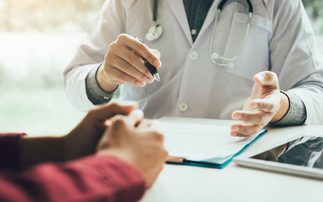This disease is all too common and has serious repercussions. Mary Randell outlines the facts.

The liver, located in the upper part of the abdomen, is the largest solid organ in the body and uses up to 20% of the body's total energy.
It has more than 500 functions and is only second to the brain in its complexity. The most important functions of the liver are:
- Breaking down carbohydrates to glucose and storing it in the liver and muscles for when energy is required;
- Removing waste products from the blood which are not excreted by the kidney;
- Supporting the body in fighting infections, particularly infections arising in the bowel;
- Manufacturing bile and processing digested food from the intestine;
- Controlling levels of fats, amino acids and glucose in the blood;
- Neutralising and destroying drugs and toxins;
- Storing iron, vitamins and other essential chemicals;
- Making enzymes and proteins which are responsible for most chemical reactions in the body, for example those involved in blood clotting and repair of damaged tissues.
The liver is very resilient and can regenerate itself, replacing cells that have been damaged by ‘toxins'. For example, every time the liver filters alcohol, some of the cells die, but these are then replaced by new cells. However, regular misuse of alcohol over a long period of time reduces the liver's ability to regenerate, resulting in serious liver damage and eventually organ failure.
Alcohol-related liver disease (ARLD) is widespread in the UK. The number of people with the condition has been rising over the past 20 to 30 years and is now one of the biggest killers in the UK today.
There are three main stages of ARLD:
Alcoholic fatty liver disease - Stage 1
Drinking a large amount of alcohol, even for only a few days, can cause a build-up of fats in the liver. However, it is normally reversible. If alcohol is not drunk for two weeks, the liver should regenerate and return to normal. Fatty liver is not always associated with alcohol misuse, it can also be caused by other conditions such as obesity and hypertension. This is known as non-alcoholic fatty liver disease.
Alcoholic hepatitis - Stage 2
Alcoholic hepatitis occurs when a large amount of alcohol, drunk over a long period, causes the tissues of the liver to become inflamed. Occasionally, alcoholic hepatitis can also occur with binge drinking (a large amount of alcohol in a short period of time). The liver damage associated with mild alcoholic hepatitis is usually reversible if you stop drinking permanently. However, if the alcoholic hepatitis is severe, or drinking continues, this can be life threatening and many people die from this condition each year.
Cirrhosis of the liver - Stage 3
Cirrhosis is the final stage of alcohol-related liver disease, which occurs when the liver becomes significantly scarred. It cannot be reversed, but stopping drinking alcohol immediately can prevent further damage and significantly increase life expectancy. If the individual does not stop drinking, they have a less than 50% chance of surviving a further five years.
Symptoms
ARLD does not usually cause any symptoms until the liver has become severely damaged. If early symptoms are experienced they are often vague and can include:
- Abdominal pain;
- Loss of appetite;
- Fatigue;
- Nausea;
- Diarrhoea;
- Feeling generally unwell.











